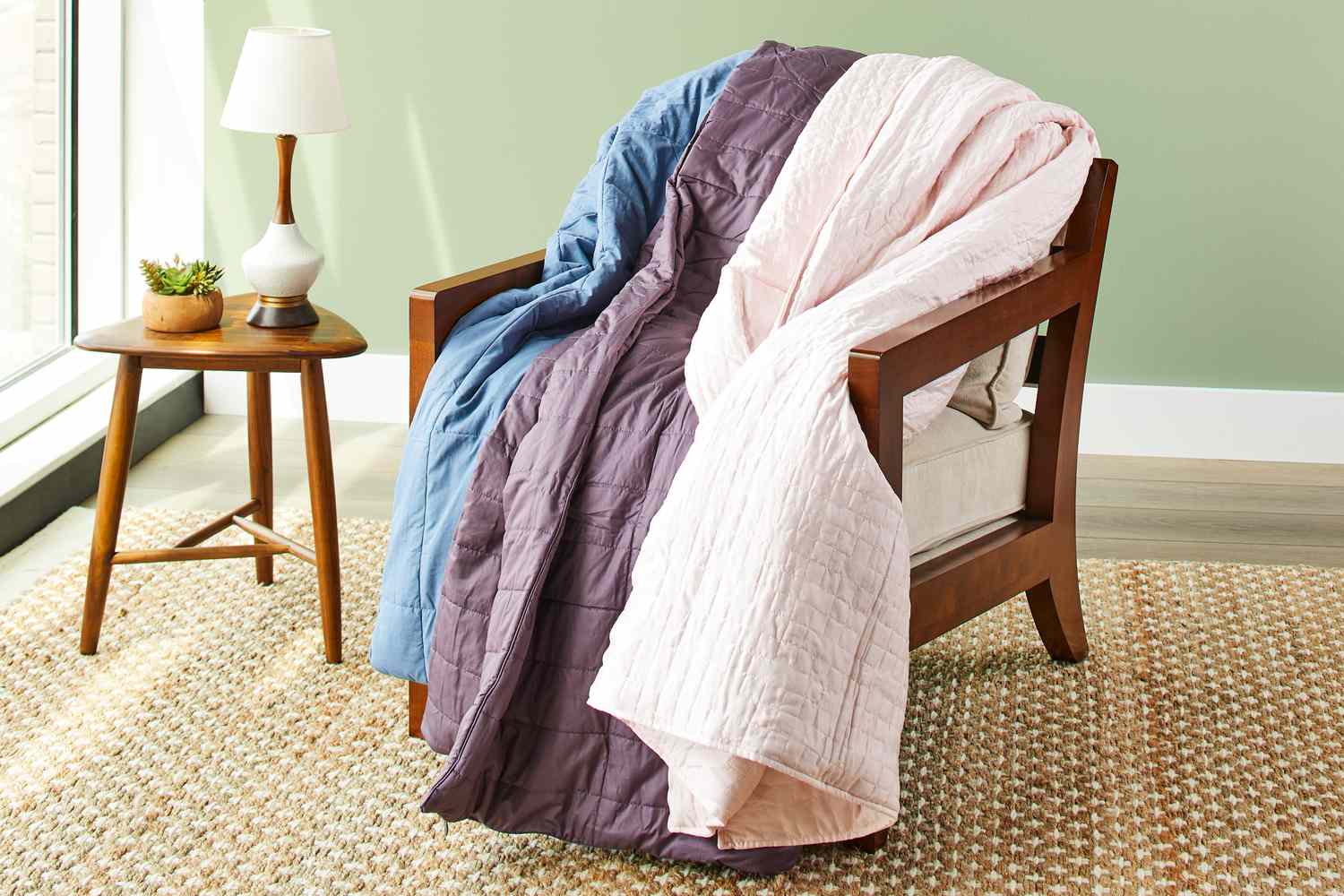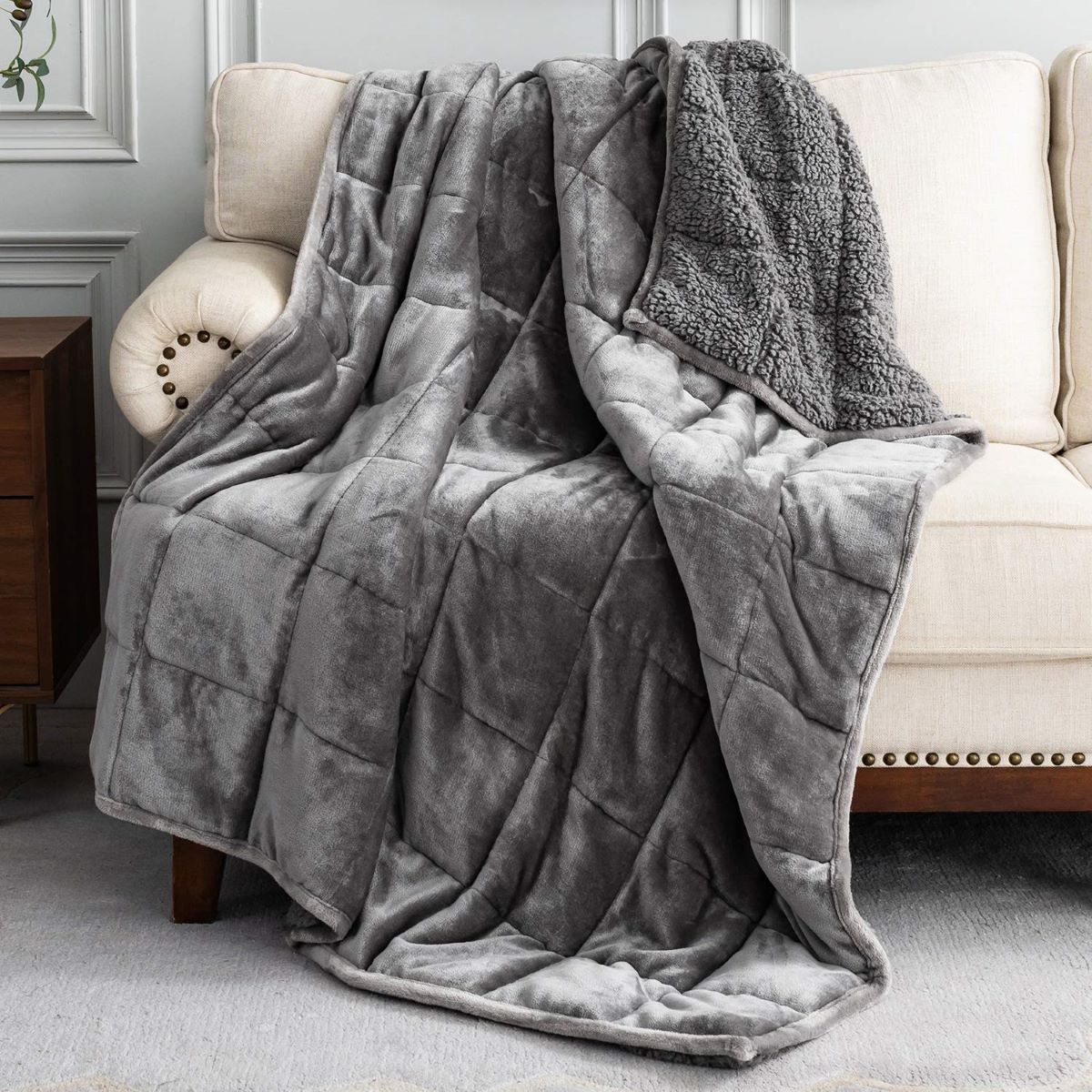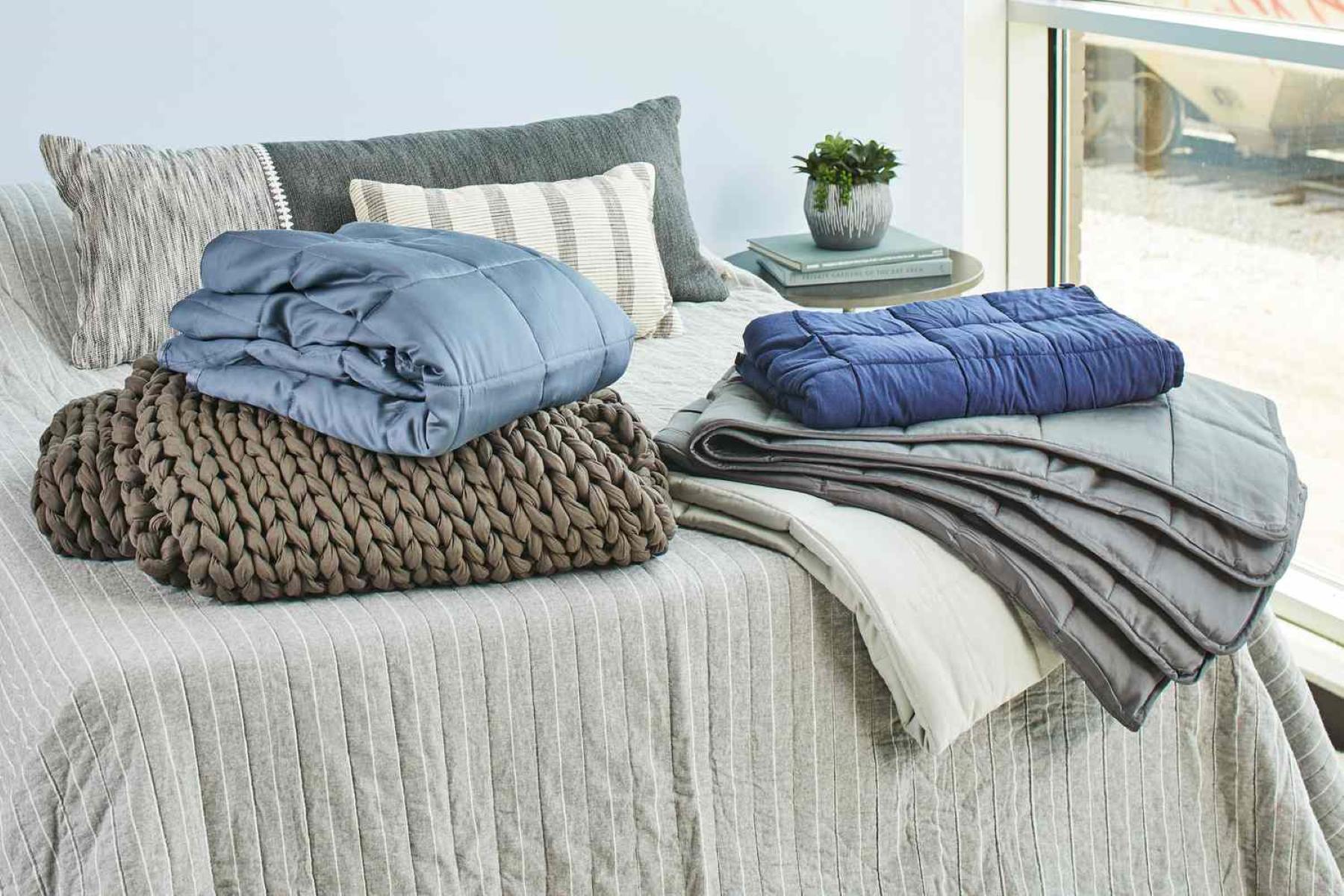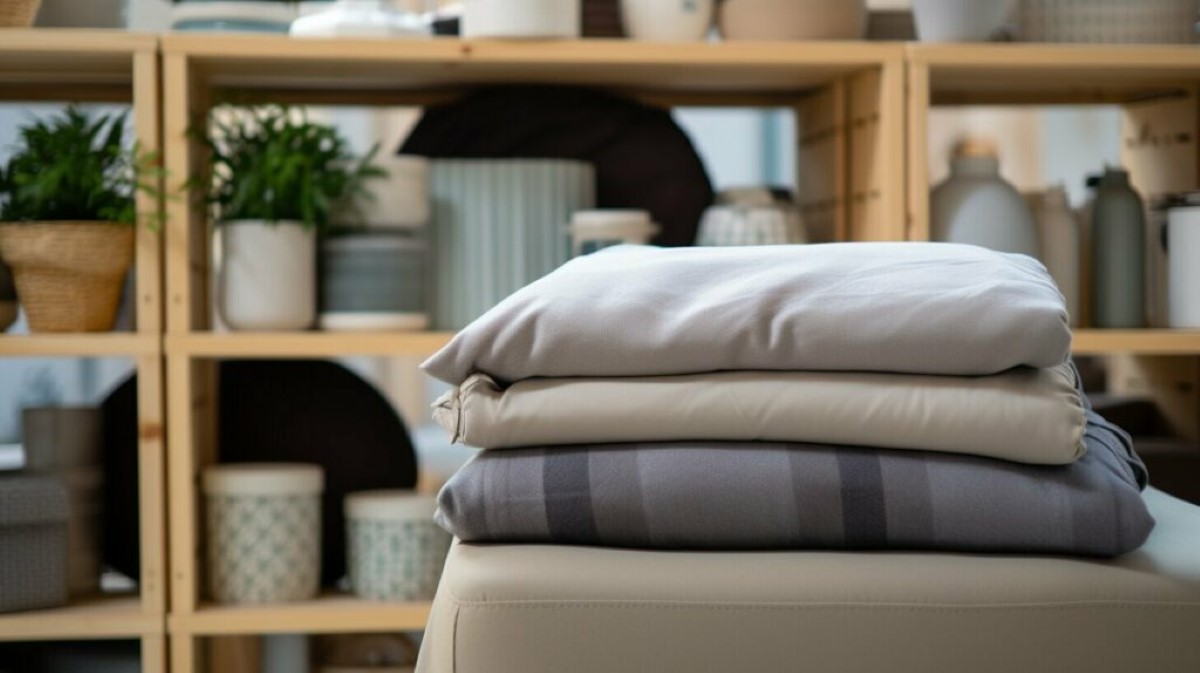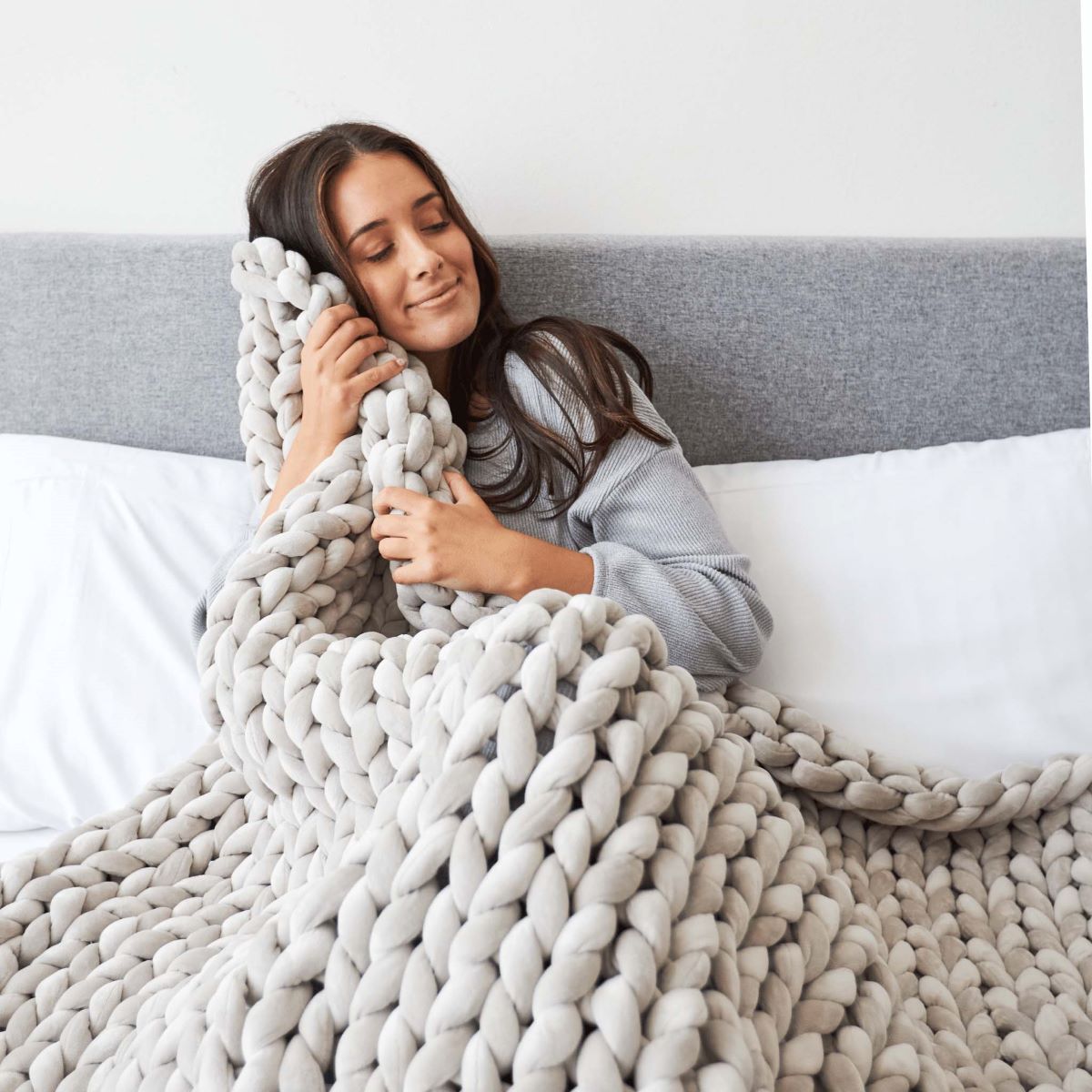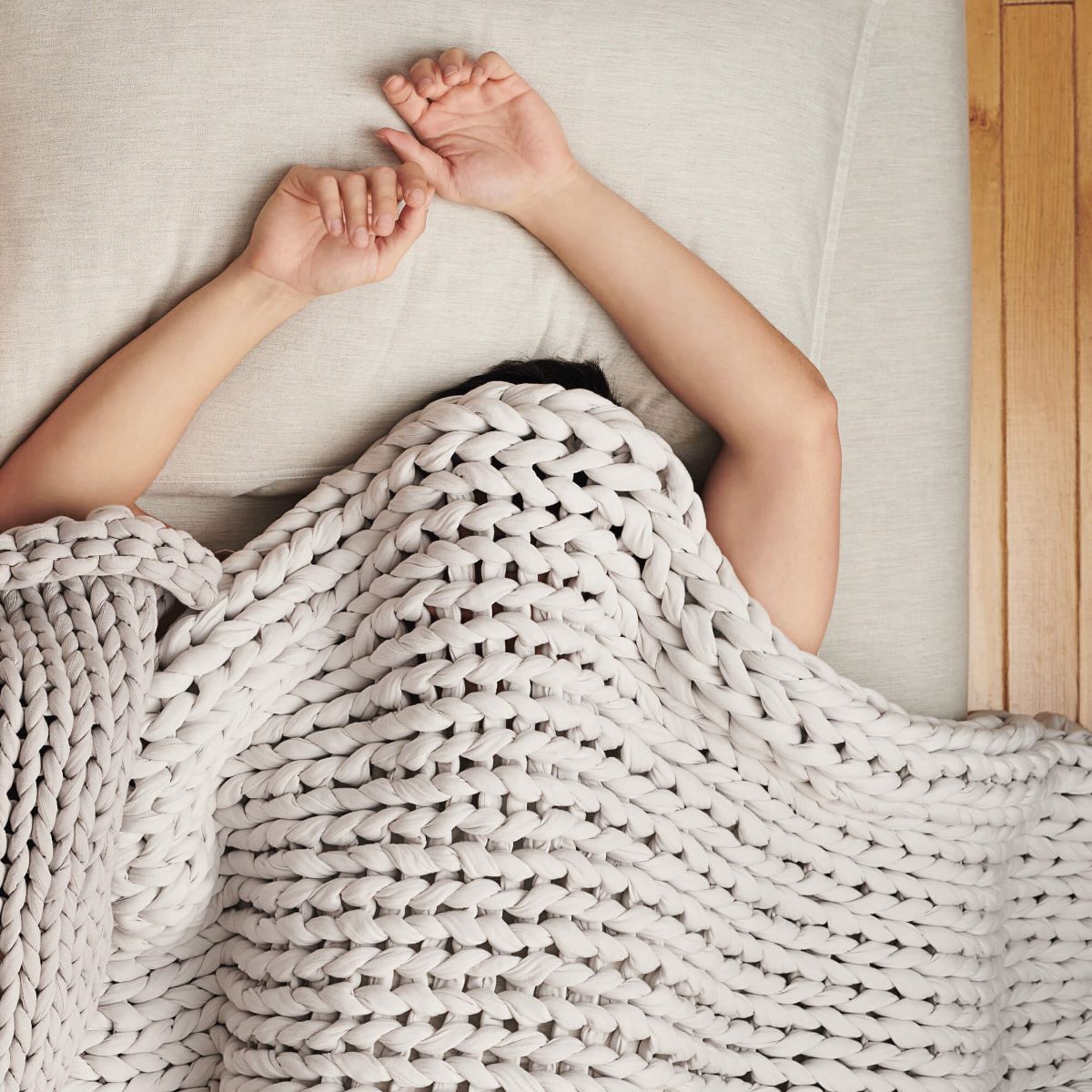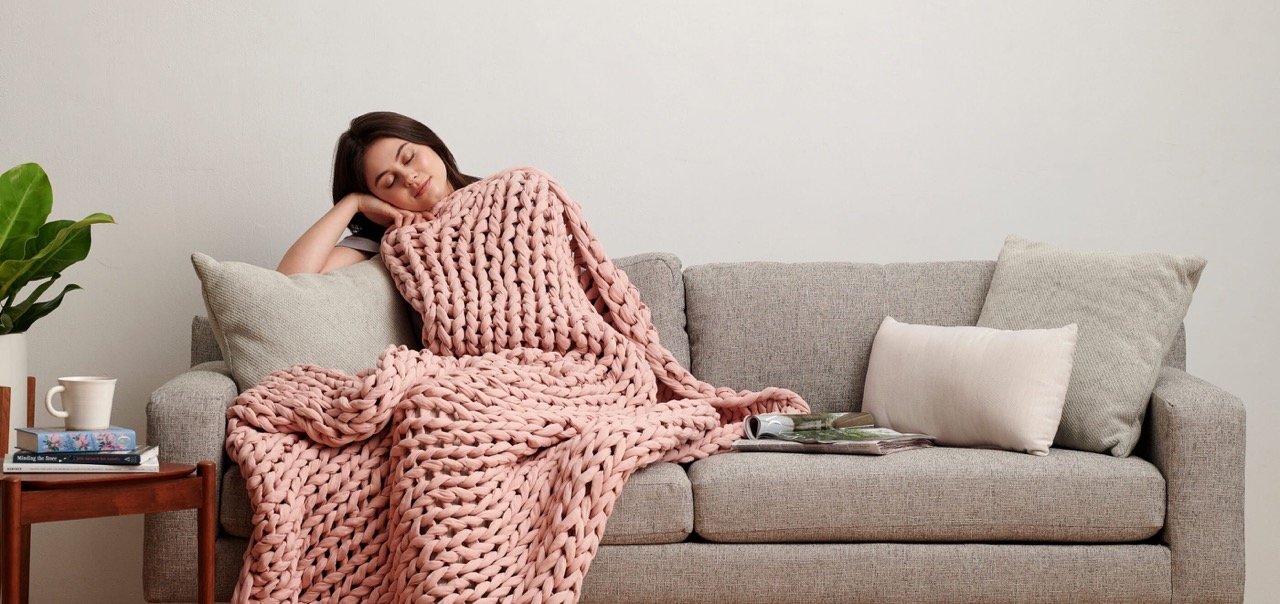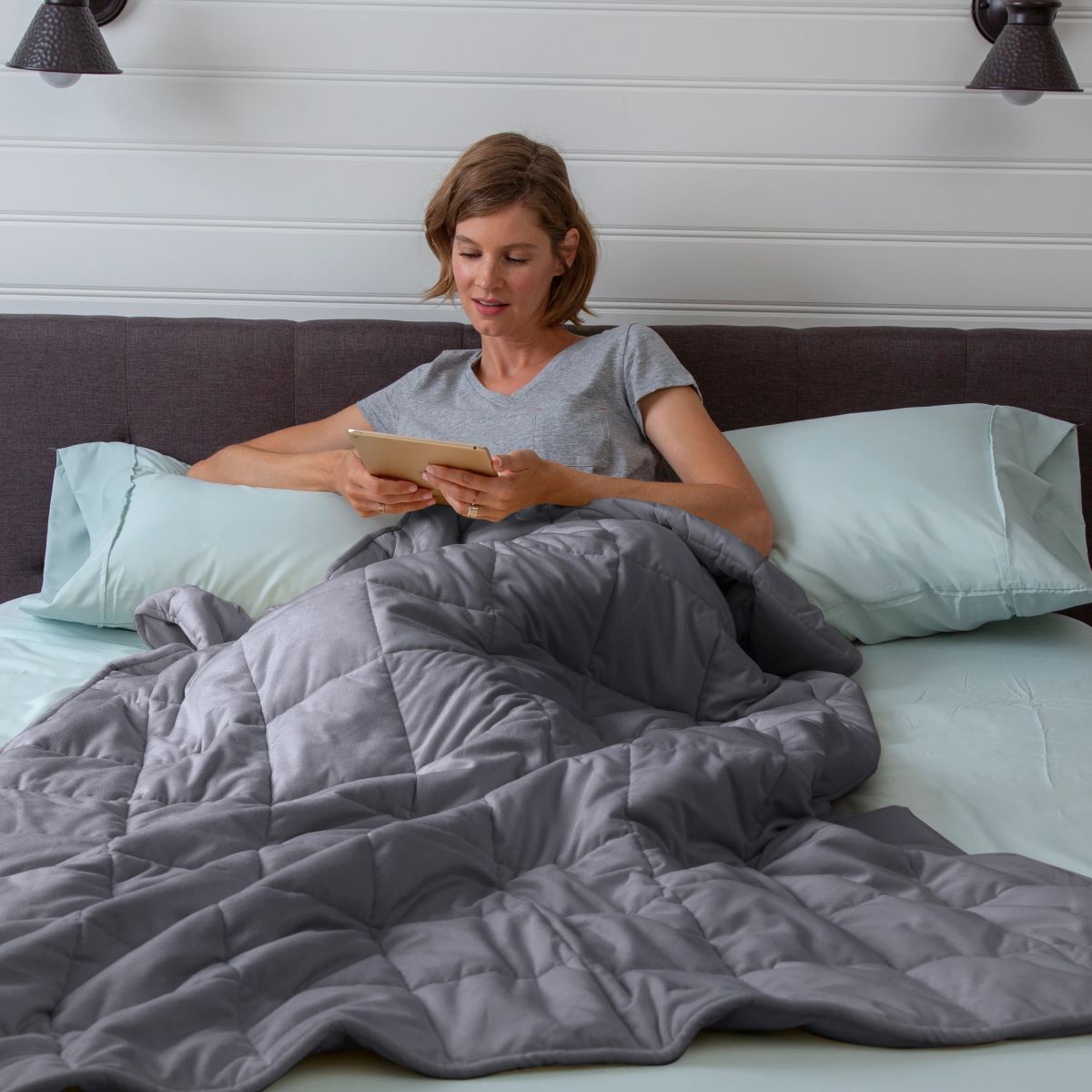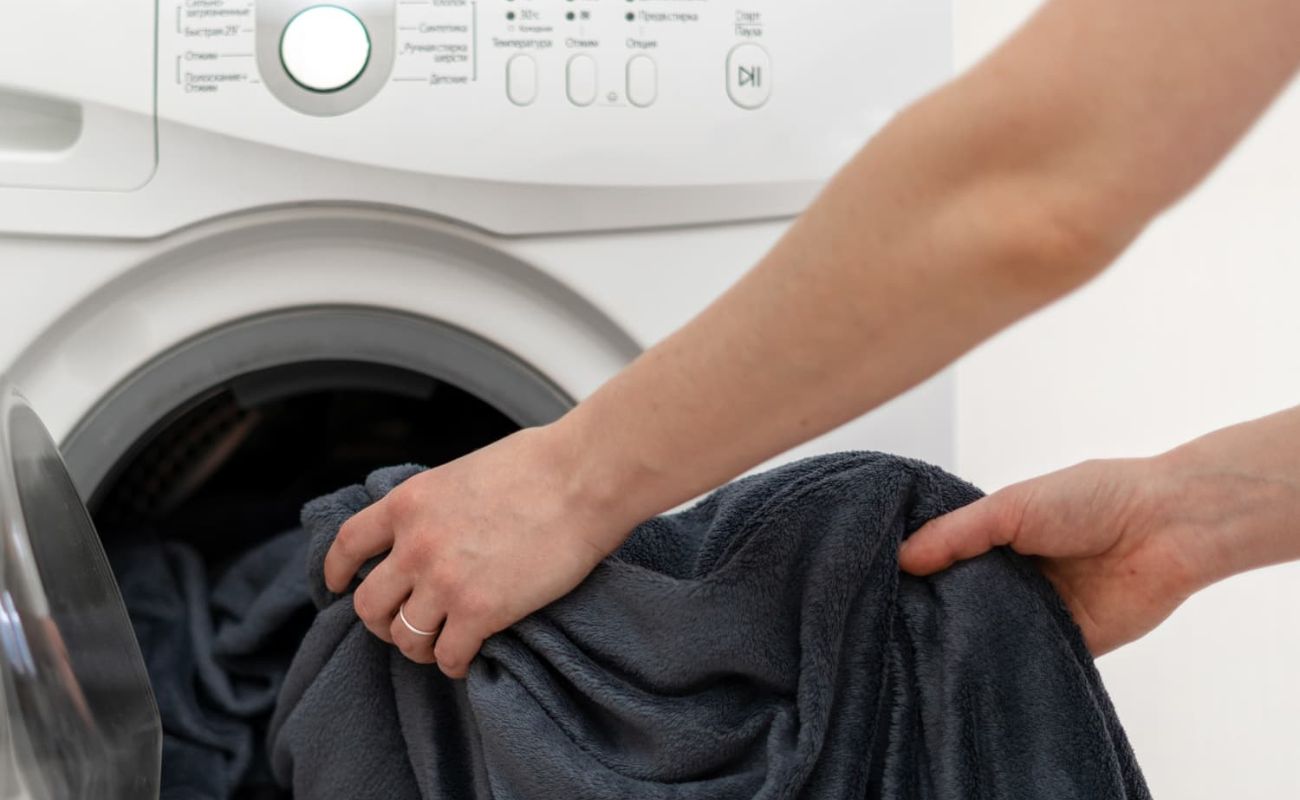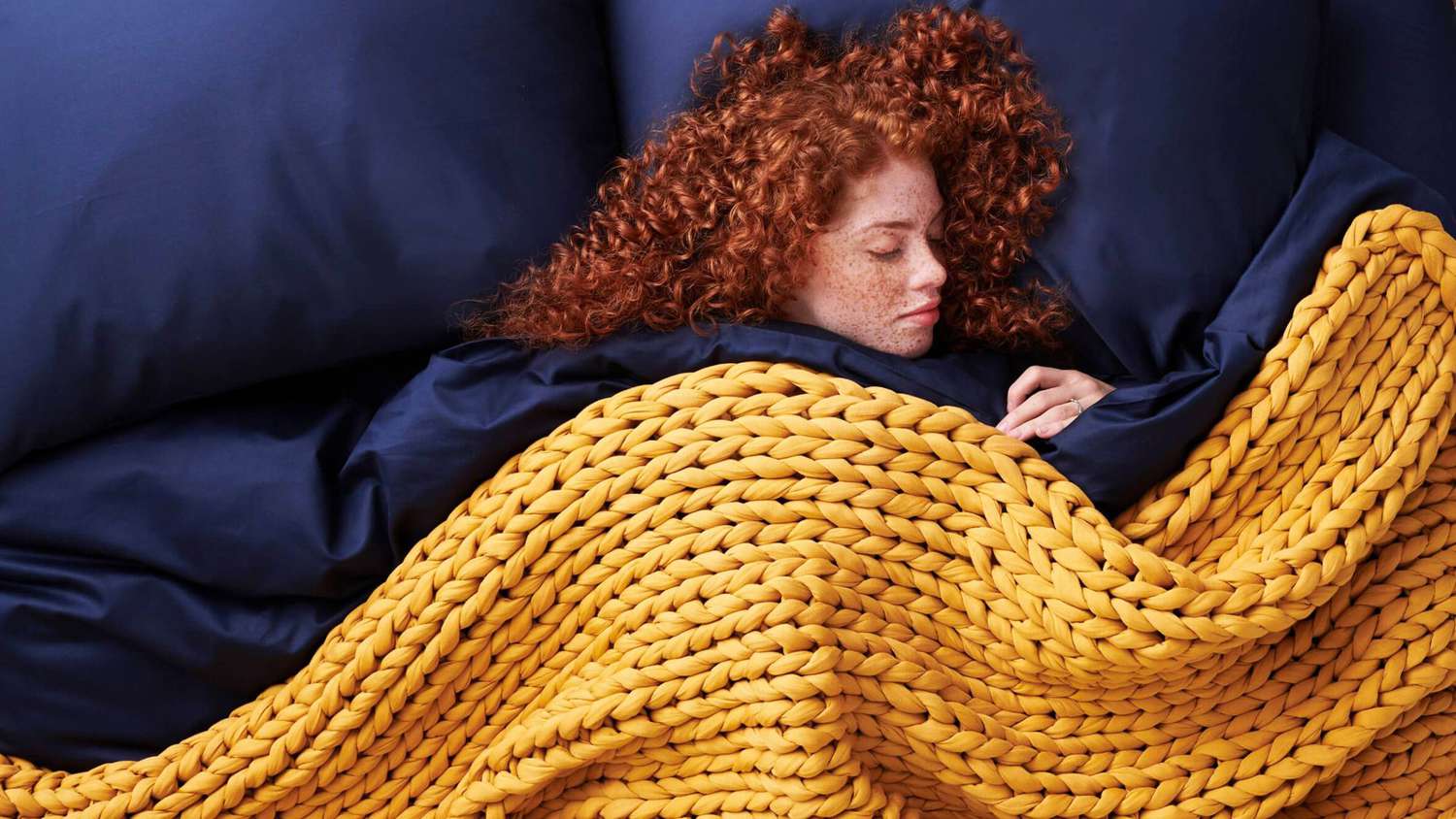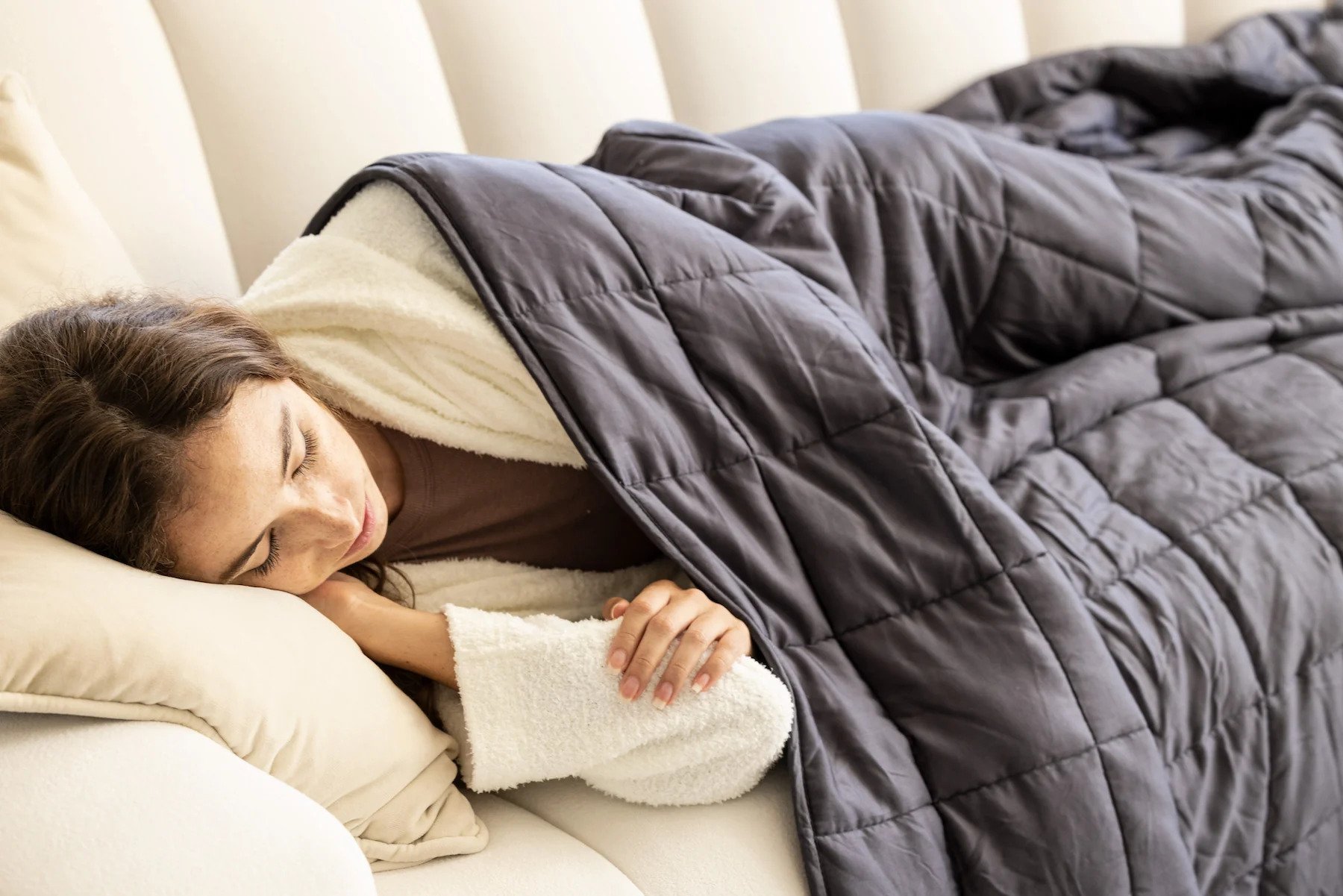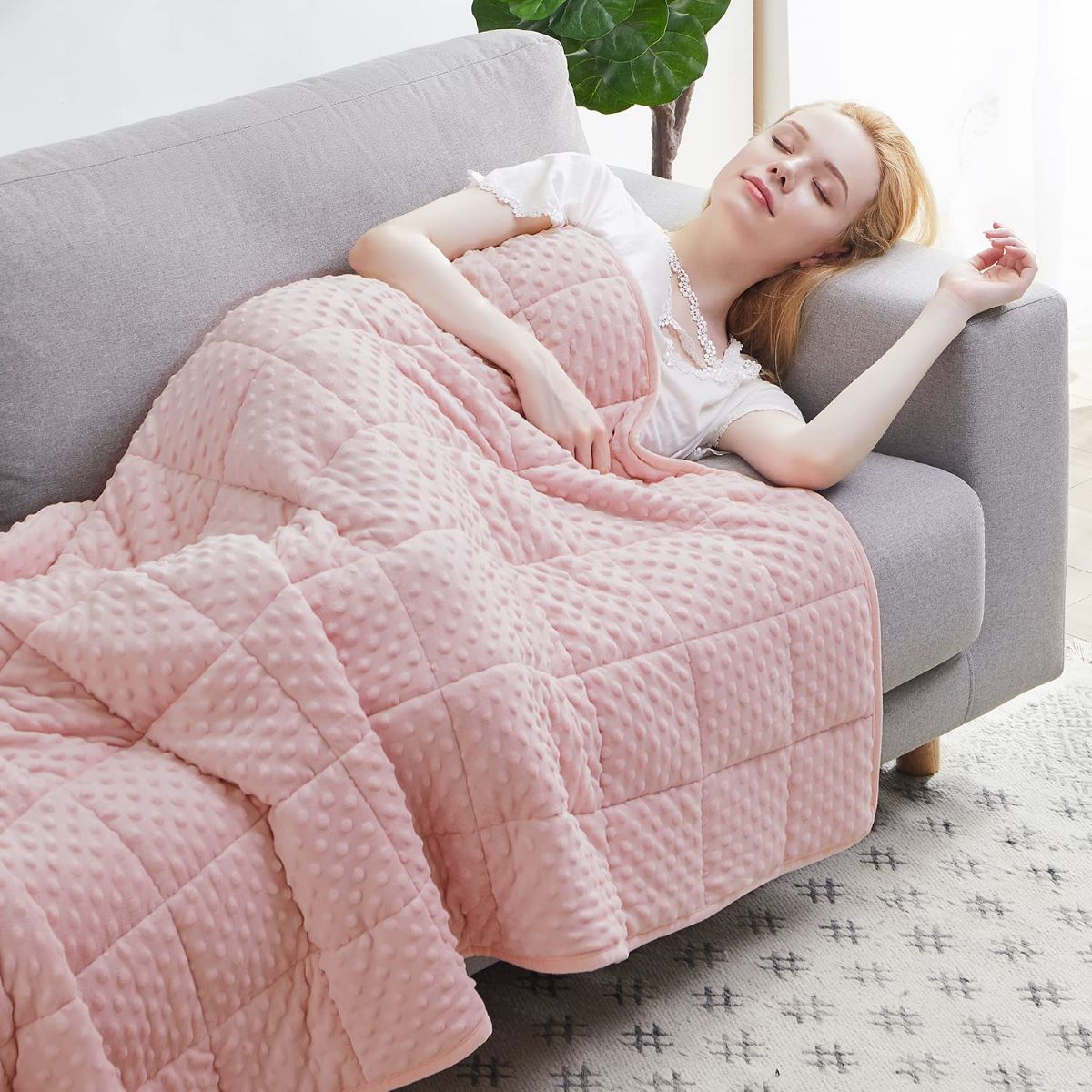

Articles
What Is A Weighted Blanket?
Modified: December 7, 2023
Learn all about weighted blankets in this informative article. Discover how they can improve sleep quality and reduce anxiety.
(Many of the links in this article redirect to a specific reviewed product. Your purchase of these products through affiliate links helps to generate commission for Storables.com, at no extra cost. Learn more)
Introduction
Weighted blankets have gained popularity in recent years for their potential to improve sleep quality, reduce anxiety, and provide a sense of calmness and comfort. These blankets, also known as gravity blankets, are designed to provide deep pressure stimulation, giving the sensation of being hugged or held.
But what exactly is a weighted blanket? In simple terms, it is a blanket filled with a combination of small beads, pellets, or other weighted materials evenly distributed throughout. The added weight is meant to create a gentle pressure on the body, which can help promote relaxation and alleviate stress.
Weighted blankets are not a new concept and have been used for therapeutic purposes for many years. Originally developed to support individuals with sensory processing disorders, such as autism or ADHD, these blankets have since gained popularity among individuals seeking a natural and non-medicated way to improve their overall well-being.
The principle behind weighted blankets is rooted in deep touch pressure therapy (DTP), which is believed to activate the parasympathetic nervous system, responsible for promoting relaxation and reducing the body’s stress response. This therapy is thought to increase the release of serotonin, a neurotransmitter associated with feelings of happiness and relaxation, while decreasing cortisol, the stress hormone.
While scientific research on weighted blankets is still limited, many anecdotal reports and testimonials suggest positive benefits. This has led to an increased demand for these blankets, with a wide range of options available on the market. Understanding how weighted blankets work, who can benefit from using them, and how to choose the right one can help you make an informed decision and reap the potential benefits.
In this article, we will explore the concept of weighted blankets in more detail, discuss the benefits they may offer, and provide guidance on choosing and using them effectively. So, if you’re curious about whether a weighted blanket is right for you, read on to learn more.
Key Takeaways:
- Weighted blankets provide deep touch pressure, promoting relaxation, reducing anxiety, and improving sleep quality by stimulating the release of serotonin and dopamine. They offer a natural and non-medicated way to enhance overall well-being.
- When choosing a weighted blanket, consider factors such as weight, size, fabric, and even weight distribution. Always consult with a healthcare professional before use, especially if you have underlying health conditions. Proper usage and care are essential for maintaining the effectiveness and longevity of the blanket.
Read more: What Is A Weighted Blanket Made Of
Definition of a Weighted Blanket
A weighted blanket is a specially designed blanket that is filled with evenly distributed weighting materials, such as glass beads or plastic pellets. These blankets are typically available in various sizes and weights, with the weight ranging from 5 to 30 pounds. The added weight is intended to provide gentle and consistent pressure on the body when the blanket is used.
Unlike traditional blankets, weighted blankets are engineered to be heavier. The weight of the blanket is evenly distributed to ensure that it applies pressure evenly across the body, resembling a comforting hug or a gentle embrace.
The concept behind a weighted blanket is based on the theory of deep touch pressure therapy, which suggests that applying gentle pressure to the body can stimulate the release of neurotransmitters like serotonin and dopamine, promoting a sense of relaxation and well-being. This pressure is believed to help calm the nervous system and reduce anxiety and stress levels, making it easier to fall asleep and stay asleep throughout the night.
Weighted blankets are typically made from soft, breathable fabrics that are durable and comfortable to use. The inner layer of the blanket is filled with the weighted materials, securely stitched or compartmentalized to ensure that the weight stays evenly distributed. The outer layer is usually made from materials like cotton, flannel, or fleece, providing a cozy and snuggly feel.
It’s important to note that weighted blankets are not meant to be a substitute for medical treatment or therapy. However, they can be used as part of a holistic approach to managing certain conditions or improving sleep quality. Always consult with a healthcare professional before using a weighted blanket, especially if you have any health concerns or medical conditions.
Now that we understand the definition of a weighted blanket, let’s delve deeper into how these blankets work and explore the potential benefits they offer.
How Do Weighted Blankets Work?
Weighted blankets work by applying deep touch pressure (DTP) to the body, which has been shown to have a calming and relaxing effect. DTP is a form of sensory input that provides a gentle, consistent pressure on the skin, muscles, and joints.
When the body experiences deep touch pressure, it triggers the release of neurotransmitters like serotonin and dopamine, which are known to regulate mood and promote feelings of relaxation and well-being. This response helps to soothe the nervous system and reduce the production of stress hormones like cortisol.
The pressure applied by a weighted blanket can also stimulate the production of melatonin, the hormone responsible for regulating sleep-wake cycles. By promoting the release of melatonin, weighted blankets can help regulate sleep patterns and improve overall sleep quality.
Furthermore, the weight distributed across the body can provide a sense of grounding and stability. This can be particularly beneficial for individuals who experience anxiety or have sensory processing disorders, as it can help to reduce feelings of restlessness or agitation.
It is important to note that weighted blankets should be used in a safe and comfortable manner. The weight of the blanket should not be excessive or restrict movement. The general rule of thumb is to choose a weighted blanket that is around 10% of your body weight. This allows for optimal pressure without feeling too overwhelming or uncomfortable.
Weighted blankets can be used in various settings, including during sleep, relaxation, or times of high stress. They are suitable for people of all ages, including children and adults. However, it is crucial to supervise the use of weighted blankets with young children to ensure their safety and prevent any potential risks.
In summary, weighted blankets work by providing deep touch pressure to the body, which triggers a physiological response that promotes relaxation, regulates sleep patterns, and reduces anxiety and stress. By understanding how weighted blankets work, we can now explore the numerous benefits they offer.
Benefits of Using a Weighted Blanket
Weighted blankets offer a range of potential benefits for individuals seeking improved sleep quality, reduced anxiety, and overall well-being. While scientific research on weighted blankets is still ongoing, many people have reported positive effects from using them. Here are some of the potential benefits:
- Promotes better sleep: The deep touch pressure provided by a weighted blanket can help regulate sleep patterns and improve the quality of sleep. The gentle pressure stimulates the release of melatonin, the hormone that signals the body to sleep, leading to a more restful and rejuvenating sleep experience.
- Reduces anxiety and stress: The deep pressure stimulation from a weighted blanket can help calm the nervous system and reduce feelings of anxiety and stress. The release of serotonin and dopamine promotes relaxation and a sense of well-being, providing a natural way to manage anxiety without the need for medication.
- Enhances mood: The feel-good neurotransmitters released through deep touch pressure can help improve mood and elevate feelings of happiness and contentment. Weighted blankets have been found to have positive effects on individuals with depression, providing a comforting and soothing sensation.
- Supports sensory processing disorders: Weighted blankets have long been used to help individuals with sensory processing disorders, such as autism or ADHD. The pressure provided by the blanket can assist in regulating sensory input, promoting a sense of calmness and focus.
- Aids in relaxation and stress relief: Using a weighted blanket during relaxation time can help induce a state of relaxation and reduce muscle tension. The gentle pressure can release endorphins and decrease the production of stress hormones, resulting in a feeling of calm and tranquility.
- Improves focus and attention: The deep touch pressure provided by a weighted blanket can help individuals improve focus and attention. It can be particularly beneficial for those with attention deficit hyperactivity disorder (ADHD), as it helps regulate sensory input and promote a sense of grounding and stability.
It’s important to note that while weighted blankets offer these potential benefits, individual experiences may vary. It’s always advisable to consult with a healthcare professional if you have any specific concerns or medical conditions.
Now that we’ve explored the potential benefits of using a weighted blanket, let’s discuss who can benefit from using one.
Who Can Benefit from Using a Weighted Blanket?
Weighted blankets can be beneficial for a wide range of individuals, from children to adults, who may experience difficulty with sleep, anxiety, or sensory processing. Here are some groups of people who may find value in using a weighted blanket:
- Individuals with insomnia or sleep disorders: If you struggle with falling asleep or staying asleep, a weighted blanket may help by providing a calming and soothing sensation. The deep touch pressure can promote relaxation and encourage a more restful sleep.
- People with anxiety or stress: The deep pressure stimulation from a weighted blanket can help reduce anxiety and stress levels. The gentle pressure can trigger the release of serotonin and dopamine, promoting feelings of calmness and well-being.
- Individuals with sensory processing disorders: Weighted blankets have been used as a therapeutic tool for individuals with sensory processing disorders such as autism, ADHD, or sensory processing disorder. The pressure from the blanket can help regulate sensory input and provide a sense of comfort and stability.
- People seeking relaxation and stress relief: Weighted blankets can be helpful for anyone looking to relax and unwind after a long day. The deep touch pressure can release tension and promote a sense of relaxation and tranquility.
- Individuals with restlessness or hyperactivity: The gentle pressure from a weighted blanket can help individuals with restlessness or hyperactivity to calm down and focus. It can provide a sense of grounding and stability, allowing for improved focus and attention.
- People with chronic pain or fibromyalgia: The pressure from a weighted blanket can also provide relief for individuals dealing with chronic pain or conditions like fibromyalgia. The deep touch pressure can help relax muscles and release endorphins, providing temporary relief.
It’s important to note that weighted blankets are not suitable for everyone. They may not be appropriate for individuals with certain medical conditions, including respiratory problems, circulatory issues, or claustrophobia. It’s always essential to seek guidance from a healthcare professional if you have any concerns or underlying health conditions.
Now that we have discussed who can benefit from using a weighted blanket, let’s explore the different types of weighted blankets available.
When choosing a weighted blanket, consider your body weight. A general rule is to select a blanket that is about 10% of your body weight for the best therapeutic effect.
Read more: What Weighted Blanket To Get
Types of Weighted Blankets
Weighted blankets come in various types, allowing individuals to find the one that best suits their preferences and needs. Here are the common types of weighted blankets available:
- Standard weighted blankets: These are the most common type of weighted blankets available. They are rectangular in shape and come in various sizes to fit different bed sizes. Standard weighted blankets are designed to be used on top of the bed or as a regular blanket.
- Lap pads: Lap pads are smaller-sized weighted blankets typically used to provide deep touch pressure to a specific area, such as the lap or shoulders. They are convenient for use while sitting or during specific activities when a full-sized weighted blanket may be impractical.
- Travel-sized weighted blankets: Travel-sized weighted blankets are smaller and more compact, making them ideal for taking on trips or when you’re on the go. These blankets can provide a sense of comfort and familiarity in unfamiliar environments.
- Weighted blanket wraps: Weighted blanket wraps are designed like a vest or wrap that can be worn around the shoulders or body. They provide targeted pressure and can be adjusted for a more customized fit, making them suitable for individuals who prefer a more active lifestyle or need mobility while receiving deep touch pressure.
- Weighted blanket duvets: Weighted blanket duvets are essentially weighted blanket covers that can be used to encase your existing blanket or comforter. This allows you to transform your regular bedding into a weighted blanket without purchasing a separate one.
When choosing a weighted blanket, it’s essential to consider the weight and size that will work best for you. The general guideline is to select a blanket that is around 10% of your body weight. However, personal preferences and comfort should also be taken into account. It’s recommended to start with a lighter weight and gradually increase if desired.
It’s worth noting that different manufacturers offer variations in materials, fabric choices, and designs. Some blankets have removable covers for easy cleaning, while others feature quilted patterns or additional comfort features like cooling or heating elements. Exploring different options can help you find the one that fits your needs and preferences.
Now that we have covered the types of weighted blankets available, let’s move on to discussing how to choose the right weighted blanket for you.
How to Choose the Right Weighted Blanket for You
Choosing the right weighted blanket is essential to ensure that you experience the maximum benefits and comfort. Here are some factors to consider when selecting a weighted blanket:
- Weight: It’s crucial to choose a weighted blanket that is appropriate for your body weight. As a general guideline, the blanket should be around 10% of your body weight. However, individual preferences and comfort levels may vary, so it’s advisable to start with a lighter weight and gradually increase if needed. Keep in mind that weighted blankets should not be too heavy, as they may cause discomfort or restrict movement.
- Size: Consider the size of the weighted blanket that is suitable for your needs. You can choose a blanket that fits your specific bed size or opt for a smaller size, such as a lap pad or travel-sized blanket, if you prefer more targeted pressure or need portability.
- Fabric and texture: Weighted blankets come in various materials and textures. Select a fabric that feels comfortable against your skin and is durable enough to withstand regular use and washing. Popular fabric choices include cotton, flannel, and fleece. Additionally, consider any sensory preferences you may have, such as a preference for a smoother or textured fabric.
- Even weight distribution: Ensure that the weighted blanket you choose has proper weight distribution. The weighting materials should be evenly distributed throughout the blanket, preventing them from clumping or shifting to one side. This ensures consistent and effective deep touch pressure across your body.
- Removable cover: Some weighted blankets come with a removable cover, making it easier to clean and maintain. A removable cover also allows you to customize the feel and texture of the blanket, as you can switch out covers to suit your preferences or seasonal changes.
- Personal preferences: Consider any personal preferences or specific needs you may have. For example, if you tend to sleep hot, opt for a weighted blanket with breathable fabric or cooling properties. If you live in a colder climate, a weighted blanket with a plush or heavier fabric may provide extra warmth and coziness.
It’s also worth noting that some individuals may require guidance from a healthcare professional when selecting a weighted blanket, especially if they have certain medical conditions or sensory sensitivities. Consulting with a knowledgeable therapist, occupational therapist, or healthcare provider can help ensure that you choose the most suitable weighted blanket for your specific needs.
Now that you have an idea of how to select the right weighted blanket, let’s discuss how to use and care for your weighted blanket properly.
Proper Usage and Care for a Weighted Blanket
Proper usage and care of your weighted blanket are essential to maintain its effectiveness and longevity. Here are some guidelines to follow:
1. Follow the manufacturer’s instructions: Each weighted blanket may come with specific guidelines for usage and care. It’s important to read and follow the instructions provided by the manufacturer to ensure you use the blanket correctly and avoid any damage.
2. Use the blanket for sleep or relaxation: Weighted blankets are primarily designed for sleep and relaxation purposes. Use it on your bed or when you want to unwind and relax. Avoid using the weighted blanket during physical activity or exercise, as the added weight can be restrictive and potentially unsafe.
3. Avoid using a weighted blanket on infants: Weighted blankets are not recommended for infants under the age of one year due to the risk of suffocation. It is crucial to ensure the safety of young children and babies, so it’s best to consult with a pediatrician regarding the appropriate bedding for infants.
4. Use the blanket on top of other bedding: Place the weighted blanket on top of your existing bedding, such as sheets or a comforter. This will help keep the blanket clean and protect it from excessive wear and tear. It’s also a good idea to use a removable cover or duvet to further protect the weighted blanket.
5. Spot clean or wash the blanket as recommended: Depending on the materials and construction of your weighted blanket, spot cleaning or machine washing may be recommended. Always refer to the manufacturer’s instructions for cleaning. Some weighted blankets may have a removable cover that can be easily washed, while others may require spot cleaning with a gentle detergent. Avoid using harsh chemicals or bleach that may damage the fabric or weighted filling.
6. Air dry or tumble dry on low: After cleaning, allow the weighted blanket to air dry or tumble dry on low heat, as recommended by the manufacturer. High heat can damage the integrity of the weighted materials or fabric. It’s important to fully dry the blanket before using it again to prevent any moisture buildup.
7. Store the blanket in a clean and dry place: When not in use, store your weighted blanket in a clean and dry location to protect it from dust, moisture, and potential damage. Avoid storing it in a humid or damp environment, as this can lead to mold or mildew growth.
By following these guidelines, you can maintain the quality and effectiveness of your weighted blanket, ensuring its long-term use and enjoyment.
Now that you know how to properly use and care for your weighted blanket, let’s address some commonly asked questions about weighted blankets.
Frequently Asked Questions about Weighted Blankets
Weighted blankets have gained popularity in recent years, but there may still be some questions and concerns you have about them. Here are some commonly asked questions about weighted blankets:
1. Are weighted blankets safe?
When used correctly, weighted blankets are generally safe for most individuals. However, they may not be suitable for everyone, including infants, young children, and individuals with certain medical conditions. It’s always important to consult with a healthcare professional before using a weighted blanket, especially if you have any underlying health concerns or if you are unsure about whether it is appropriate for you.
2. Can I use a weighted blanket while pregnant?
It is generally not recommended to use a weighted blanket while pregnant, especially during the later stages of pregnancy. The added weight may cause discomfort or restrict movement. Always consult with your healthcare provider for personalized advice regarding the use of a weighted blanket during pregnancy.
3. Can I use a weighted blanket if I have respiratory issues, circulatory problems, or claustrophobia?
If you have any respiratory issues, circulatory problems, or claustrophobia, it’s essential to consult with your healthcare provider before using a weighted blanket. These conditions may require special considerations or adjustments to ensure your safety and comfort.
4. Can children use weighted blankets?
Weighted blankets can be beneficial for children, but it’s crucial to choose an appropriate weight and size for their age and development. Always supervise the use of weighted blankets with young children and ensure that they can easily remove the blanket on their own if needed.
5. Can I share my weighted blanket with someone else?
While sharing a weighted blanket is possible, it’s important to choose a blanket that is appropriate for the heavier person. The blanket should be around 10% of the heaviest person’s body weight to ensure effective deep touch pressure.
6. Can I use a weighted blanket if I have a pet?
Using a weighted blanket with a pet in the bed is a personal preference. However, it’s important to ensure the safety and comfort of your pet. If your pet shows any signs of discomfort or seems distressed by the weight of the blanket, it’s best to remove the blanket from the area.
7. Are there any side effects of using a weighted blanket?
When used correctly, there are generally no significant side effects of using a weighted blanket. However, some individuals may find the added weight uncomfortable or may experience increased body temperature. It’s important to listen to your body and discontinue use if you experience any discomfort or adverse effects.
8. Can I use a weighted blanket with other bedding or sleep aids?
Yes, you can use a weighted blanket in conjunction with other bedding or sleep aids, such as pillows or sleep masks. Experimentation may be needed to find the combination of sleep aids that works best for you.
Remember, always consult with a healthcare professional if you have any specific concerns or medical conditions before using a weighted blanket. They can provide personalized guidance and ensure that a weighted blanket is suitable for you.
Now that we have addressed some common questions about weighted blankets, let’s conclude our discussion.
Read more: How To Fix A Weighted Blanket
Conclusion
Weighted blankets have become increasingly popular for their potential to improve sleep quality, reduce anxiety, and promote a sense of calmness and relaxation. These blankets work by applying deep touch pressure, which stimulates the release of serotonin and dopamine, neurotransmitters associated with feelings of happiness and relaxation. The gentle pressure can help regulate sleep patterns, reduce anxiety and stress, and provide relief for individuals with sensory processing disorders.
When choosing a weighted blanket, consider factors such as the weight, size, fabric, and even weight distribution. It’s important to select a weighted blanket that suits your individual preferences and needs. Follow the manufacturer’s instructions for usage and care to ensure the longevity and effectiveness of your weighted blanket.
Weighted blankets are not a substitute for medical treatment or therapy, and it’s important to consult with a healthcare professional before using one, especially if you have any underlying health conditions. Additionally, some individuals, such as pregnant women, those with respiratory issues, circulatory problems, or claustrophobia, may need personalized guidance on the use of a weighted blanket.
While scientific research on weighted blankets is still ongoing, many individuals have reported positive effects from using them. However, individual experiences may vary, and it’s important to listen to your body and discontinue use if you experience any discomfort or adverse effects.
In summary, weighted blankets can provide a natural and non-medicated way to improve sleep, reduce anxiety, and promote relaxation. With proper usage and care, they can be a valuable tool in enhancing overall well-being. If you’re considering using a weighted blanket, consult with a healthcare professional and explore different options to find the one that suits you best.
Remember, a weighted blanket cannot solve all problems, but it can serve as a comforting and soothing aid on your journey to improved sleep and well-being.
Frequently Asked Questions about What Is A Weighted Blanket?
Was this page helpful?
At Storables.com, we guarantee accurate and reliable information. Our content, validated by Expert Board Contributors, is crafted following stringent Editorial Policies. We're committed to providing you with well-researched, expert-backed insights for all your informational needs.
